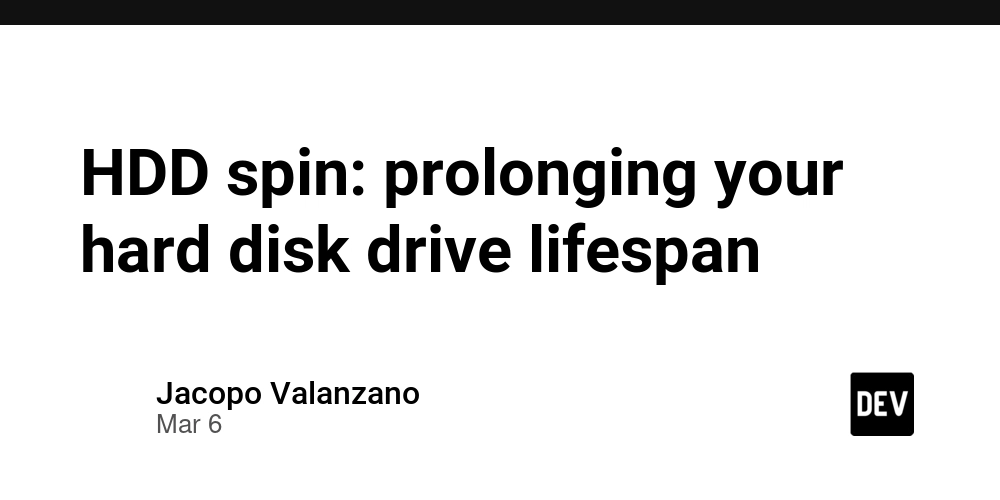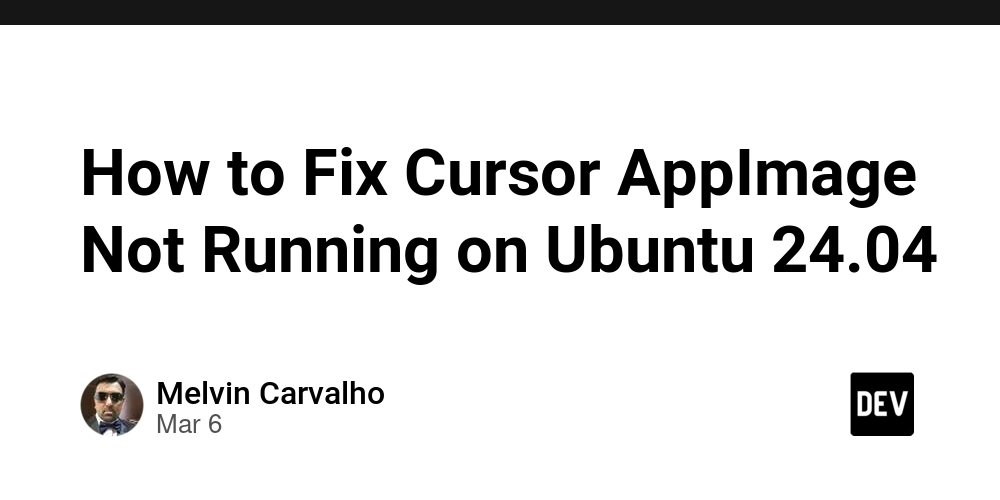Bridging Funding Gaps in OSS with Gemini's Nifty Gateway: A Technical Dive
Abstract This post explores how Gemini’s Nifty Gateway is bridging open source funding gaps through blockchain innovations and NFTs. We dive into the history of open source software (OSS), explain why sustainable funding is essential, and analyze the technical and economic features of tokenized funding. We look at core concepts, practical applications, and potential challenges. With insights drawn from industry sources and supporting articles like Gemini's Nifty Gateway: Bridging Funding Gaps in OSS, as well as relevant discussions on blockchain for open source funding and NFT marketing strategies, this comprehensive analysis serves as a guide for developers, investors, and enthusiasts interested in the future of OSS financial sustainability. Introduction Open source software (OSS) has powered technological innovation for decades. Yet, despite its widespread adoption, many OSS initiatives face chronic funding challenges. Gemini’s Nifty Gateway leverages blockchain technology and non-fungible tokens (NFTs) to offer a sustainable financial solution for OSS projects. By creating a symbiosis between tokenized assets and a collaborative funding model, developers can now monetize contributions and attract sponsorships in novel ways. This post unpacks these developments while maintaining a technical yet accessible tone. Background and Context The Genesis of Open Source Funding Challenges OSS projects thrive on community collaboration and transparency, which has resulted in revolutionary software tools and frameworks. From early systems to today’s cloud computing and artificial intelligence platforms, OSS fuels a significant portion of the tech industry. However, many projects are built and maintained by volunteer efforts, leaving a gap in financial sustainability. Historically, funding methods such as donations or corporate sponsorships have proven insufficient. This has driven innovators to look at blockchain technology for alternatives. The rise of NFTs—unique cryptographic tokens that represent ownership—has offered a new avenue for monetizing digital creativity, including open source contributions. The Role of Blockchain and NFTs Blockchain provides immutable records and decentralized trust. For OSS, it promises transparent contribution tracking and seamless transfer of ownership via tokenized assets. NFTs, in this space, can represent not only art or collectibles but milestones, code commits, or licensing agreements. Projects such as Nifty Gateway and Tokenized Open Source Licensing illustrate how blockchain can redefine intellectual property (IP) ownership and financial incentives in the open source world. Ecosystem and Market Dynamics The contemporary niche of NFT marketplaces is rapidly expanding. Gemini’s Nifty Gateway is a leader in this space, connecting digital creators and token collectors on a secure, scalable platform. Coupled with blockchain’s potential for cross-chain interoperability, innovative funding models emerge that can support a diverse ecosystem of OSS projects. Core Concepts and Features The integration of blockchain, NFTs, and OSS funding introduces several key concepts: Tokenized Contributions Developers can now create unique tokens as representations of code contributions or project milestones. This tokenization process allows them to monetize their work while retaining community credibility. For instance, an NFT may be issued to commemorate a feature release, with future royalties or benefits tied to its value. Sustainable Funding Models By leveraging diverse revenue models, projects can overcome traditional funding obstacles. This model includes: Sponsorships: Companies can purchase NFTs that represent future rights, branding opportunities, or exclusive features. Crowdfunding and Donations: The blockchain supports transparent crowdfunding where donors are rewarded with NFTs, ensuring accountability and future benefits. Exclusive Perks and Incentives NFTs can serve as passes to exclusive benefits within the open source ecosystem. This could include direct lines of communication with project maintainers or even revenue-sharing opportunities during product commercialization. Interoperability and Licensing Challenges A critical technical challenge is ensuring that blockchain-based NFT models remain compatible with existing open source licenses. Projects like Open Source Licensing Challenges and Solutions delve into these technicalities. Ensuring compliance without compromising the ethos of open collaboration is paramount. Table: Key Features of Gemini’s Nifty Gateway for OSS Funding Feature Explanation Benefits Tokenized Contributions NFTs represent code contributions and project milestones. Enables monetization for developers. Sponsorship Models Companies can sponsor projects by acquiring NFT tokens tied to branding or exclusive be
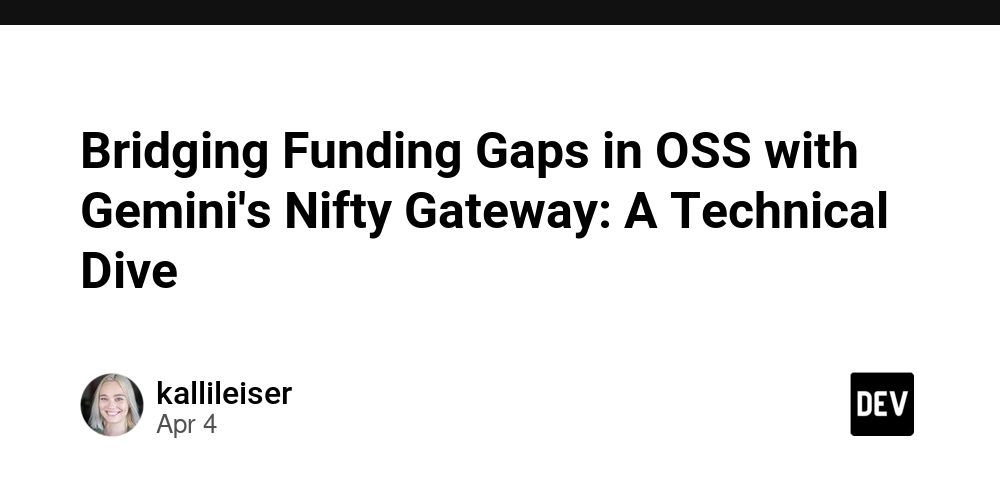
Abstract
This post explores how Gemini’s Nifty Gateway is bridging open source funding gaps through blockchain innovations and NFTs. We dive into the history of open source software (OSS), explain why sustainable funding is essential, and analyze the technical and economic features of tokenized funding. We look at core concepts, practical applications, and potential challenges. With insights drawn from industry sources and supporting articles like Gemini's Nifty Gateway: Bridging Funding Gaps in OSS, as well as relevant discussions on blockchain for open source funding and NFT marketing strategies, this comprehensive analysis serves as a guide for developers, investors, and enthusiasts interested in the future of OSS financial sustainability.
Introduction
Open source software (OSS) has powered technological innovation for decades. Yet, despite its widespread adoption, many OSS initiatives face chronic funding challenges. Gemini’s Nifty Gateway leverages blockchain technology and non-fungible tokens (NFTs) to offer a sustainable financial solution for OSS projects. By creating a symbiosis between tokenized assets and a collaborative funding model, developers can now monetize contributions and attract sponsorships in novel ways. This post unpacks these developments while maintaining a technical yet accessible tone.
Background and Context
The Genesis of Open Source Funding Challenges
OSS projects thrive on community collaboration and transparency, which has resulted in revolutionary software tools and frameworks. From early systems to today’s cloud computing and artificial intelligence platforms, OSS fuels a significant portion of the tech industry. However, many projects are built and maintained by volunteer efforts, leaving a gap in financial sustainability.
Historically, funding methods such as donations or corporate sponsorships have proven insufficient. This has driven innovators to look at blockchain technology for alternatives. The rise of NFTs—unique cryptographic tokens that represent ownership—has offered a new avenue for monetizing digital creativity, including open source contributions.
The Role of Blockchain and NFTs
Blockchain provides immutable records and decentralized trust. For OSS, it promises transparent contribution tracking and seamless transfer of ownership via tokenized assets. NFTs, in this space, can represent not only art or collectibles but milestones, code commits, or licensing agreements. Projects such as Nifty Gateway and Tokenized Open Source Licensing illustrate how blockchain can redefine intellectual property (IP) ownership and financial incentives in the open source world.
Ecosystem and Market Dynamics
The contemporary niche of NFT marketplaces is rapidly expanding. Gemini’s Nifty Gateway is a leader in this space, connecting digital creators and token collectors on a secure, scalable platform. Coupled with blockchain’s potential for cross-chain interoperability, innovative funding models emerge that can support a diverse ecosystem of OSS projects.
Core Concepts and Features
The integration of blockchain, NFTs, and OSS funding introduces several key concepts:
Tokenized Contributions
Developers can now create unique tokens as representations of code contributions or project milestones. This tokenization process allows them to monetize their work while retaining community credibility. For instance, an NFT may be issued to commemorate a feature release, with future royalties or benefits tied to its value.
Sustainable Funding Models
By leveraging diverse revenue models, projects can overcome traditional funding obstacles. This model includes:
- Sponsorships: Companies can purchase NFTs that represent future rights, branding opportunities, or exclusive features.
- Crowdfunding and Donations: The blockchain supports transparent crowdfunding where donors are rewarded with NFTs, ensuring accountability and future benefits.
Exclusive Perks and Incentives
NFTs can serve as passes to exclusive benefits within the open source ecosystem. This could include direct lines of communication with project maintainers or even revenue-sharing opportunities during product commercialization.
Interoperability and Licensing Challenges
A critical technical challenge is ensuring that blockchain-based NFT models remain compatible with existing open source licenses. Projects like Open Source Licensing Challenges and Solutions delve into these technicalities. Ensuring compliance without compromising the ethos of open collaboration is paramount.
Table: Key Features of Gemini’s Nifty Gateway for OSS Funding
| Feature | Explanation | Benefits |
|---|---|---|
| Tokenized Contributions | NFTs represent code contributions and project milestones. | Enables monetization for developers. |
| Sponsorship Models | Companies can sponsor projects by acquiring NFT tokens tied to branding or exclusive benefits. | Offers stable funding and brand positioning. |
| Exclusive Perks | NFTs can come with value-added benefits (e.g., early access, feature privileges). | Encourages community engagement. |
| Decentralized Governance | Decisions on funding and resource allocation can be made via decentralized models. | Enhances transparency and trust. |
Applications and Use Cases
The synergy between blockchain, NFTs, and OSS funding opens up several practical use cases:
1. Funding Collaborative Projects
Imagine a community-driven software project needing funds to accelerate development. By issuing NFTs that represent unique contributions to the codebase, early backers receive exclusive access to development updates or even a share in generated revenues. This model not only benefits the developers but also creates a sense of ownership among supporters.
2. Corporate Sponsorship and Branding
Large tech companies can sponsor open source projects through tokenized assets. By purchasing NFTs, they secure branding opportunities and signal support for technological innovation. This arrangement can be formalized through smart contracts, ensuring that both parties benefit as the project grows.
3. Monetization of Code and Licensing
OSS projects can leverage NFTs for licensing agreements. Instead of traditional licenses, projects can distribute tokenized licensing rights. Consequently, developers are compensated every time their code is utilized in commercial applications—a model explored in detail in the article Innovative Funding for Open Source Projects.
Additional Perspectives from Dev.to
Explorations on Dev.to further highlight the evolving landscape. For example:
- Understanding Financial Growth in Open Source Projects discusses metrics and models for financial success in OSS initiatives.
- Crowdfunding Open Source: Fueling Innovation Together offers insights on community-driven fundraising.
- The Crucial Role of Financial Education for Open Source Developers emphasizes the need for resource management education in an open source world.
Challenges and Limitations
While the model is promising, technical and practical challenges remain:
Market Volatility:
The NFT market is known for its fluctuations. Sudden drops in token value may affect the sustainability of funding channels. Projects must prepare for market cycles and implement strategies like diversified revenue models to mitigate risks.Intellectual Property Concerns:
Integrating blockchain-based licensing with traditional open source licenses poses legal and technical challenges. Ensuring compliance while embracing tokenization requires innovative approaches and clear guidelines. Resources such as Ethical Funding Methods offer guidance on balancing financial incentives with OSS values.Adoption and Education:
A key hurdle is educating developers and sponsors alike. Without a deep technical understanding of blockchain and NFT mechanisms, stakeholders might be reluctant to adopt these models. Continued education through webinars, courses, and community initiatives can bridge this gap.Security and Regulatory Environment:
Blockchain technology, although secure by design, still faces challenges related to smart contract vulnerabilities and regulatory mismatches. Keeping up with evolving policies and maintaining robust security practices is critical for long-term success.
Bullet List: Key Challenges
- Market Fluctuations: NFT value instability can impact funding reliability.
- IP and Licensing Hurdles: Aligning traditional OSS licenses with tokenized models.
- Infrastructure and Adoption: Educating the community and integrating into current workflows.
- Security and Compliance: Constant evaluation of smart contract security and adherence to regulatory guidelines.
Future Outlook and Innovations
The convergence of OSS with blockchain technology is still in its infancy, but the potential is vast. Here are some trends and innovations to watch:
Continued Integration and Standardization
We expect to see continued efforts to standardize frameworks for tokenized funding in OSS. This includes developing industry standards for NFT-based licensing agreements and enhancing interoperability among various blockchain platforms.
Expanded Ecosystem and Community Governance
Projects may increasingly adopt decentralized governance models that allow communities to vote on funding decisions and development priorities. This transparent model can lead to more resilient ecosystems and encourage community participation beyond traditional contribution models.
Enhanced Tools and Developer Platforms
New platform tools are soon to emerge that simplify NFT creation and management for OSS projects. These tools are likely to come with developer-friendly features, ensuring that even those with limited blockchain expertise can participate effectively.
Regulatory Maturity and Security Enhancements
As the blockchain ecosystem matures, regulatory frameworks will become clearer and more stable. Improved security protocols for smart contracts and platforms like Gemini will ensure a safer environment for both developers and sponsors.
Research and Education Initiatives
With continuous support from financial education initiatives, such as those outlined in Understanding Financial Growth in Open Source Projects, funding models will evolve. Research on OSS funding trends will play a crucial role in shaping sustainable practices for years to come.
Summary
In summary, Gemini’s Nifty Gateway is at the forefront of a revolutionary funding model for open source software. By integrating blockchain technology and NFTs, developers gain new avenues to monetize contributions and secure sponsorship, while sponsors and companies benefit from exclusive access and branding opportunities. Despite challenges such as market volatility, IP alignment, and the need for enhanced education, the future outlook remains promising.
The key takeaways from this discussion include:
- The importance of tokenized contributions in creating financial incentives for developers.
- The benefits of diverse revenue models that combine sponsorships, crowdfunding, and licensing innovations.
- The need for ongoing education and ecosystem support to address technical, legal, and regulatory challenges.
With continuous advancements in blockchain technology and an increasing push towards sustainable open source funding, the future of OSS looks brighter than ever. Projects and developers now have opportunities to secure much-needed financial backing without compromising on the ideals of transparency and community collaboration.
For further reading and to stay updated on related topics, please explore more about blockchain for open source funding and check out additional insights on NFT-based licensing in the Nifty Gateway and Tokenized Open Source Licensing article.
This post aimed to provide a comprehensive, technical yet accessible exploration of how Gemini’s Nifty Gateway is setting the stage for sustainable OSS funding. By combining deep domain expertise with clear, structured analysis, we hope that developers and stakeholders alike can appreciate both the potential and the challenges inherent in this innovative funding ecosystem.
Acknowledgments:
We also encourage readers to explore further discussions on platforms like Dev.to. Noteworthy reads include Crowdfunding Open Source: Fueling Innovation Together and The Crucial Role of Financial Education for Open Source Developers.
By embracing cutting-edge technologies and fostering vibrant communities, the integration of NFTs and blockchain into the OSS funding landscape marks a transformative moment in software development. Let’s continue to build a future where open source thrives both creatively and financially.









































































































































































![[The AI Show Episode 142]: ChatGPT’s New Image Generator, Studio Ghibli Craze and Backlash, Gemini 2.5, OpenAI Academy, 4o Updates, Vibe Marketing & xAI Acquires X](https://www.marketingaiinstitute.com/hubfs/ep%20142%20cover.png)















































































































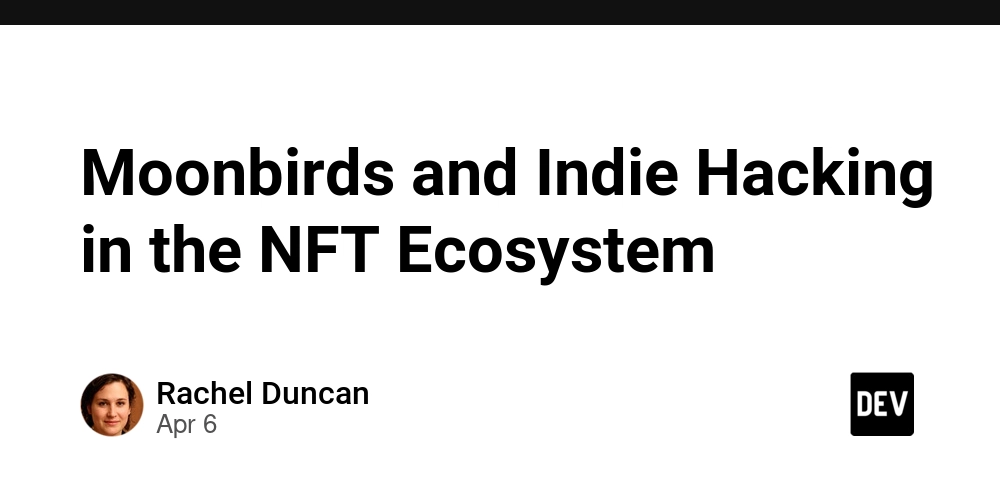

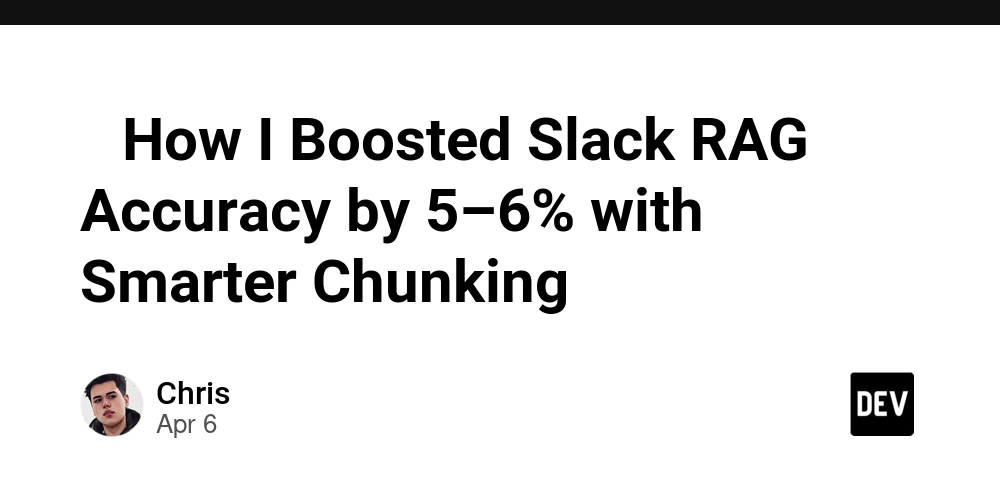









![[FREE EBOOKS] The Kubernetes Bible, The Ultimate Linux Shell Scripting Guide & Four More Best Selling Titles](https://www.javacodegeeks.com/wp-content/uploads/2012/12/jcg-logo.jpg)



![From drop-out to software architect with Jason Lengstorf [Podcast #167]](https://cdn.hashnode.com/res/hashnode/image/upload/v1743796461357/f3d19cd7-e6f5-4d7c-8bfc-eb974bc8da68.png?#)






































































































.png?#)




.jpg?#)
































_Christophe_Coat_Alamy.jpg?#)







































































































![Rapidus in Talks With Apple as It Accelerates Toward 2nm Chip Production [Report]](https://www.iclarified.com/images/news/96937/96937/96937-640.jpg)






































































































































